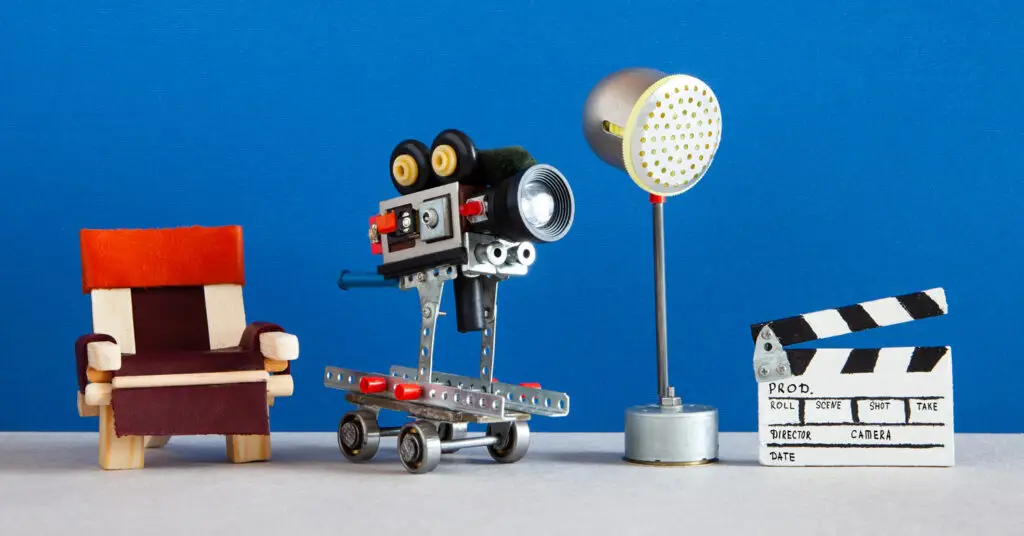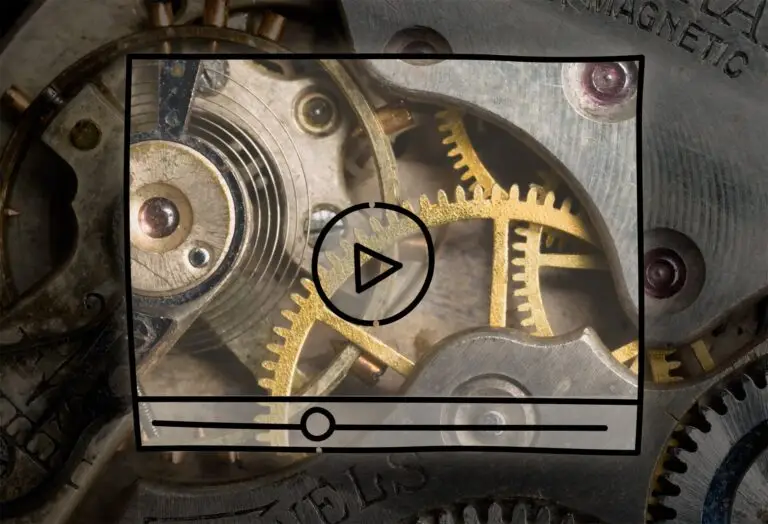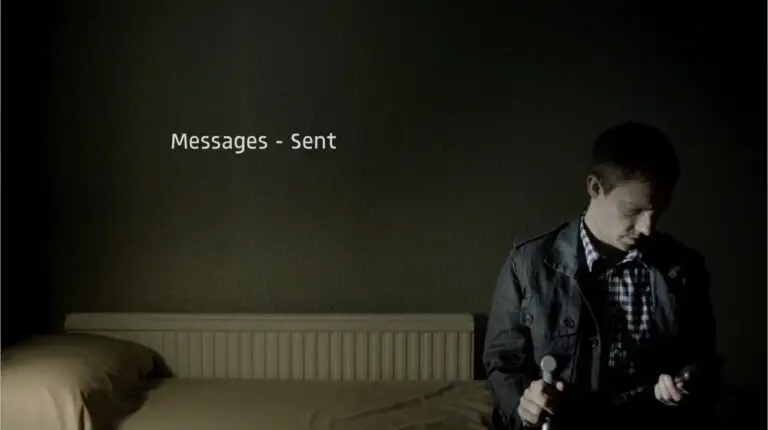Video production has a reputation for being costly and time-consuming.
If you want to create a commercial, video series, film or documentary with a high production value that also stays within the comfy confines of a pre-defined budget, you are going to need to prioritize your vision.
If you already have a concept and script nailed down, an experienced producer can determine what it may cost to make the video. If you don’t have your format nailed down completely and open to new ideas, you should aim to produce something with a great concept that is at the same time simple to execute.
You may be able to identify areas you can adjust in your script. Is it too long? Are there too many locations? Too many actors? Should we cut the scene with the live elephants? Do we really need to shoot this with 4 cameras? Did we leave anything in the budget for lunch? In this article, we’ll go over some of the questions to consider when you are conceptualizing, writing and budgeting for your videos.
As you brainstorm ideas for videos, letting these questions linger in your mind might feel restrictive. This is healthy. Unless you are working with unlimited amounts of money (contact us), it is helpful to identify common budget busters so you can work with your producer to creatively develop ways to save while not straying too far from the vision. An video completed on-time and on budget is always better than an overly ambitious production that never gets off the ground.
Crew
A film crew can include any number of writers, producers, directors, camera operators, grips & lighting designers, hair, makeup, wardrobe, props, script supervisors, vfx supervisors, drivers, runners, editors, production assistants, and assistants to assistants. If you aren’t working with a Hollywood budget, you might need to scale it back a bit. For corporate videos and documentaries, a crew of 2 or 3 might work perfectly. While it is possible for a single person to fill multiple roles (director/camera operator/sound/editor), your concept might call for more people to meet the demands and time restraints of a shoot. When people are able to take on specialized roles, the shoot will generally move a lot faster and fewer mistakes will be made. With a number of scenes, locations, and actors to wrangle, a good crew can help you turn what would take days into hours, and could end up costing much less in the long run.
Are any of the shots mission critical or time sensitive?: If you only have limited time to film a certain person, one-time event, or a limited amount of access to a location, it may make sense to budget for additional hands to make your production run quickly and with less room for error. The more critical the shoot, the more people you should have in dedicated positions to execute the task at hand. A specialized crew with unique roles is costlier up-front, but may be worth it if there is any chance the whole production will fail if something were to go wrong.
What crew roles are most important? Even though every role on a film set is “important”, there are roles that may be more important than others depending on the nature of your shoot. A fashion or lifestyle shoot would need to budget with extra emphasis on hair, makeup, wardrobe, cinematography and locations. A comedic sketch’s success would hinge on a better writer, director, and performers. To get more from a limited budget, you should identify and budget more in the areas that are critical and cut back in areas that may be less important to the success of the shoot.
Would the project be better served by a smaller crew or single camera operator? Certain types of productions such as documentaries sometimes require smaller crews. When shooting documentary-style pieces, it makes sense to keep the crew lean and nimble, with enough time budgeted to be present for certain events and milestones to unfold, conduct interviews, or revisit locations. A small crew is less intrusive, enabling more “intimate” interviews and low-profile b-roll filming.
Equipment
What equipment will you need for the shoot? The most obvious (and revered) piece of gear on a set is the camera. Less celebrated but often equally important are the lenses, lights, microphones, and camera stabilization equipment. Some When considering how much of your budget you may need to devote to equipment, ask yourself these questions:
What camera & lenses will we use (and how many)? Almost any can record beautiful images when put in capable hands. As you upgrade your camera, you’ll start to see incremental improvements in the image. Some handle colors well, other are great at shooting in low light, some cameras are small an unobtrusive, some are big and record in higher resolution with greater color depth, some can capture ultra-slow motion. Will your production require multiple cameras to be rolling at the same time? Your camera rental package will rise accordingly.
How will the on-camera talent, objects or spaces be lit? In some cases, such as documentary or event videos, adding light may be either impractical or impossible. But if your budget calls for shooting indoor scenes, conducting interviews, shooting a spokesperson or objects, you will probably need to add light, modify light or block light in some way to get the best results. Outdoor shoots may not require additional lights, but might benefit from using light shaping tools such as scrims and reflectors.
Will the camera be moving in any of the shots? Unless you are going for a hand-held documentary look, your cinematographer should to utilize a fluid tripod head, slider, dolly, or gimbal to keep the camera steady during moving shots. Basic camera packages usually include a tripod and fluid head, but sliders, dollys, gimbals and other stabilization equipment might be considered a special request. Minimize any fancy camera movements that may be “required” in your script, and you will save money on your production budget. You can always make up for it with better writing.
Will we be recording any sound? If you have any spoken content or dialogue on screen, you’ll need a microphone and a method to place it either on or close to your subject. All microphones are not created equal. If the story hinges on spoken dialogue, a good microphone and operator with the equipment to place it in the right location is just as important as the camera. If you need to capture multiple sources of sound (two or more people) you’ll need to run each microphone into a mixer/recorder, and use dedicated sound operator/crew member to monitor and adjust audio levels.
Are we going to shoot on a green screen? Green screen compositing works best when footage is captured with a camera that allows footage to be captured at a higher color bit-depth. Lighting green screen footage may also requires more lighting fixtures (to light backgrounds evenly). If you want to shoot on a green-screen, you’ll need to budget for a camera with greater capabilities and adequate lighting or the result may look amateur.
Do we want the freedom to rework color? Certain professional-level cameras or external video recorders can capture footage with a higher color bit-depth. Greater bit-depth offered will give an editor or colorist more flexibility to “fix” problematic shots, match shots to others, or achieve highly stylized or cinematic looks in post production. Demanding this flexibility comes at a cost, because you will need to use a more expensive camera or an add-on recorder, the footage files and disk space required will be much larger, and the footage you capture must be processed before it will look acceptable.
Are we capturing slow-motion or time-lapse footage? Certain cameras work better than others when it comes to capturing great slow-motion footage. Time-lapse video is often constructed from a series of photos that are converted to video, so this might require a DSLR camera. Decide whether this slow motion or time-lapse footage is a “nice to have” or a “must have” in your production because it might affect the overall cost of your camera package.
Locations:
Whether it is promotional, documentary or narrative film, your location can play a critical part in the story. In any case, getting access to locations, reserving studios, getting permits approved, and moving between locations can be costly. If you want to save on your video production budget, utilize fewer locations in your script.
What locations do we already have access to? Take an inventory of the locations you may already have easy access to that may be free or very low cost. You may have co-workers, friends, or relatives that own or lease properties that may work for your location. Consider these locations first and see if they can fit into your script, or reconfigure your script to take advantage of these locations to save production costs.
Are these locations film-friendly? Shooting a scene in a private home or office can be easy. Shooting on a downtown street or commercial property may be difficult and require permits, logistics, security and more. To make your production more affordable, try to make clever use of locations that aren’t difficult to secure, access or control.
How many locations does the script/concept call for? Shooting in multiple locations means that you have to spend time and resources moving gear and people between sets. Explore ways to streamline your script by either cutting, combining, or eliminating locations to be shot in. If one scene is in an office setting and another takes place on a beach, you have to account for the time spent moving everything between these locations. Even a short drive can eat into a shoot day significantly. Adapt your script to work in locations that can be utilized to film more than one scene. With the right creativity and flexibility you may be able to shoot your entire video in one location.
Will any staging or prep be required? If you want to dress your location with signs, props or a specific color scheme, you will need to plan additional time to access that location and prepare it accordingly. You might be able to save on staging by utilizing minimal setups, or clever lighting techniques.
Will weather make-or-break the shoot? A backup plan (reschedule or relocate) should be considered if weather is not ideal for a particular scene. You can plan to make use of your schedule by making a backup plan (alternative scene or location) or setting contingencies ahead of time so you are not paying for crew and talent to stand in the rain.
Will the location need to be utilized at a specific time of day? You may need to record your restaurant scene after-hours or early morning. You may want to capture your perfect closing shot at sunset. It is best to plan for these requirements ahead of time so you can utilize your crew efficiently.
Do we need to access to power, restrooms, changing rooms, etc? If you plan on shooting in a remote locations, consider how your cast and crew will access power and other basics like bathrooms and running water. You may need to allow room in the budget for rental of trailers, facilities or generators.
Can we build this location? Building a set may be the best option, especially if you are looking for a highly stylized or unique set that isn’t readily available in the real world. You may also see an opportunity to utilize green-screen compositing to fake a location, but keep in mind this will increase post-production time, and requires a talented visual effects artist.
Cast
Consider if your script or concept requires any actors or extras. If you plan to use a professional actor or spokesperson, you will need to devote part of the budget to pay them. Otherwise, you will be relying on inexperienced volunteers or family members to realize your vision. Even though it seems like a “fun” opportunity, acting on camera isn’t for the faint of heart. Even well-meaning friends can quickly burn out when the demands of a real production start to set in. Hiring a professional actor will not only give you a better performance, they will understand the process and memorize lines so you don’t waste valuable time and resources on set. If you want to make the most of your talent budget, here are some questions you should ask.
How important is it to find an actor with the right look or voice? The pickier you are, the more difficult it will be to cast your role(s). If you want the most options with the least amount of work, a professional talent agency can send a list of available actors that fit your unique needs along with associated day rates. If you want to pay less for talent, you’ll have to “discover” and recruit them directly. With many casting call sites on the Internet, this can be done, but it will still take some time and additional screening.
How many actors or extras are needed for the production? Professional actors are often paid per day. The less on-screen characters and extras your production requires, the less you have to budget for their compensation, as well as associated makeup, wardrobe, hair and other accommodations needed for each actor. If you want to save money, the simplest use less actors in your script. If you are on a shoestring and feeling a little dangerous, you can recruit friends, co-workers or family members for low-pay roles or background extras.
How many locations will we need to record the actor(s) in? You may need your actor(s) to perform in multiple scenes, or in many locations. A simple way to save on talent budget is to consolidate your schedule to shoot scenes including your actors back to back, saving other shots for a time your actors aren’t “on the clock”. Producers will often schedule a production to shoot scenes out of order to make the most of a specific actors (or crew) time on set.
Should we set aside time to rehearse and refine with an actor? If you plan on recording lengthy scripts, dialogue or pitches, you might also choose to budget for time and location to conduct auditions and/or table-reads with your actors. This step can save time on-set when tensions/costs may be high and every minute counts.
Post Production
The post-production phase may include editing footage, mixing music, adding sound effects, adjusting color, designing titles, creating animations, and visual effects. Depending on your concept, post-production alone may demand the largest portion of your budget. If you want to save money on post production, the cardinal rule still applies: Simplify. Ask yourself these questions to determine if there are areas you can adjust for.
How long will the final piece be? The shorter the edit, the less time it generally takes to complete. As always there are exceptions to the rule. A 30-second high-energy commercial with professional color grading and graphics could take more to time to edit than a 5-minute interview-heavy documentary piece.
How much source material will we need to work with? Raw footage for a scripted commercial or sketch might consist of a number of short “takes” and pre-planned shots that can be cut together with the script as a guide. The raw material for a 10 min documentary might include 5 hours of interview footage shot on two cameras, 3 hours of b-roll footage, photos and audio recordings. An editor is tasked with reviewing, rejecting, collecting, transcoding, and assembling all of these elements into a coherent story. The more footage that will need to be worked through, the more decisions will need to be made, and the more time it will take an editor to complete the project.
How can we streamline the revision/feedback process? If you are working with an editor, you can make the best use of their time by collecting and consolidating feedback and revisions from all interested parties regarding the initial cut, and presenting them to your editor at once rather than doled out over time. This will keep you from falling into an endless revision cycle. Your editor will be happy, and a happy editor will go the extra mile on your project.
Do we need animation or visual effects? Animation, motion graphics, compositing, or visual effects can take a healthy bite out of a production budget. There may be tricks that can be used in your script to either simplify or get around the need for special effects altogether. Do we need to show the explosion, or would a sound effect and reaction shot suffice? Do we need an animated talking bear, or could we use a puppet instead? The less visual effects and animation required the fewer dollars your production should cost.
Can we repurpose the footage for multiple videos? If you are creating commercial or promotional content, think about how you can squeeze the most out of your footage by re-cutting or breaking apart the video for use in certain platforms and contexts. For instance, you can use the same footage with a different voiceover to create a commercial that targets a niche audience. You can re-cut a 3 min documentary story into a series of 30 second social media teasers. You can reuse b-roll to create an eye-catching header video background for your landing page. Finding ways to repurpose your footage will offer a greater return on your video production investment.
Other Considerations
Here are a few more questions to consider in your production budget other than cast, crew, locations and post.
Will we have full rights to the footage we produce? Get clarity on how you can use the videos footage that you are paying for. What if you want to reuse the video on other media, or re-cut the footage into another piece at a later date? Usage rights should be worked out in advance with your production company and/or cinematographer when factoring costs.
What will the licenses cost for any stock music, graphics or footage used in the edit? The stock license purchased may only include the rights to use the asset in a single video on the Internet. If your final video piece will be broadcast on television or re-sold as a product, the license may cost more. A certain song used might require incremental royalty payments in exchange for rights to use in your video. Other music and media is licensed royalty-free in perpetuity across all mediums.
What will will we eat? Now you are asking the important questions. A hungry cast and crew will burn out quickly and could turn an otherwise exciting production into a grueling chore. Whether it’s basics like coffee, water and snacks or a fully catered craft services, food and drinks will prove to be a small price to pay in helping keep everyone on their A-game with production rolling at full speed.
In Conclusion
Defining a video production budget is difficult when you don’t have lots of experience producing videos. Asking these questions will help steer your budget conversations in the right direction, and might inspire you to re-think your concept entirely. Whatever you are trying to make, make it simple. Don’t pay for crew, actors, equipment, accessories, or special effects that aren’t crucial to the story and ultimately won’t deliver an adequate return on your production investment.







